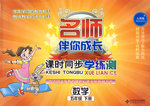题目内容
Would it surprise you to learn that, like animals, trees communicate with each other and pass on their wealth to the next generation?
UBC Professor Simard explains how trees are much more complex than most of us ever imagined. Although Charles Darwin thought that trees arc competing for survival of the fittest, Simard shows just how wrong he was. In fact, the opposite is true: trees survive through their co-operation and support, passing around necessary nutrition “depending on who needs it”.
Nitrogen(氮) and carbon are shared through miles of underground fungi(真菌) networks, making sure that all trees in the forest ecological system give and receive just the right amount to keep them all healthy. This hidden system works in a very similar way to the networks of neurons(神经元)in our brains, and when one tree is destroyed, it affects all.
Simard talks about “mother trees”, usually the largest and oldest plants on which all other trees depend. She explains how dying trees pass on the wealth to the next generation, transporting important minerals to young trees so they may continue to grow. When humans cut down “mother trees” with no awareness of these highly complex “tree societies” or the networks on which they feed, we are reducing the chances of survival for the entire forest.
“We didn’t take any notice of it.” Simard says sadly. “Dying trees move nutrition into the young trees before dying, but we never give them chance.” If we could put across the message to the forestry industry, we could make a huge difference towards our environmental protection efforts for the future.
1.The underlined sentence “the opposite is true” in Paragraph 2 probably means that trees .
A. compete for survival
B. protect their own wealth
C. depend on each other
D. provide support for dying trees
2.“Mother trees” are extremely important because they .
A. look the largest in size in the forest
B. pass on nutrition to young trees
C. seem more likely to be cut down by humans
D. know more about the complex “tree societies”
3.The underlined word “it” in the last paragraph refers to .
A. how “tree societies” work
B. how trees grow old
C. how forestry industry develops
D. how young trees survive
4.What would be the best title for the passage?
A. Old Trees Communicate Like Humans
B. Young Trees Are In Need Of Protection
C. Trees Are More Awesome Thart You Think
D. Trees Contribute To Our Society
1.C
2.B
3.A
4.C
【解析】文章大意:本文主要讲述了森立的树木会通过“tree societies”把自己的财富交给下一代。并详细说明了这一发现的具体内容。
1.推理题。根据本句Although Charles Darwin thought that trees arc competing for survival of the fittest, Simard shows just how wrong he was. In fact, the opposite is true: 可知达尔文认为树是相互竞争以获得生存。但是Simard的实验发现达尔文是错误的。实际上:与达尔文的理论相反的观点是正确的。也就是说树不是竞争生存,而是考相互合作,相互依靠生存下来的。故C正确。
2.推理题。根据文章第四段Simard talks about “mother trees”, usually the largest and oldest plants on which all other trees depend.可知“mother trees”通常都是其他的树依赖的大树,它承担这向小树输送养料的作用。ACD三项都是片面的理解。故B正确。
3.推理题。根据第四段最后三行和最后一段第一行When humans cut down “mother trees” with no awareness of these highly complex “tree societies” or the networks on which they feed, we are reducing the chances of survival for the entire forest.
“We didn’t take any notice of it.”当人们意识不到这种复杂的“tree societies”情况下砍倒了mother trees,我们就减少了整个森林幸存的机会。最后一段第一句中的it就是指complex “tree societies”。故A正确。
4.主旨大意题。根据文章主题段第一段Would it surprise you to learn that, like animals, trees communicate with each other and pass on their wealth to the next generation?可知树和动物一样,能够把自己的财富交个下一代。这比人们原来的看法完全不一样,树比我们认为地更聪明。故C正确。

 名师伴你成长课时同步学练测系列答案
名师伴你成长课时同步学练测系列答案